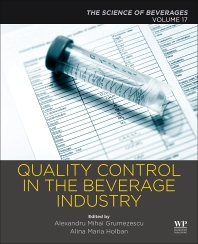Today’s industrial environment is filled with ways to increase profit, meet challenges of competition, improve market share, reduce operating costs, and manage state-of-the-art production and distribution facilities throughout the supply chain. Perhaps that is why the title supply chain manager was initiated and applied to persons assigned to focus and direct necessary activities and responsibilities throughout the chain.
To assist such managers, top managements have realized that to accomplish these goals and overcome complexities, they had to provide computerized systems designed to simplify and/or eliminate paperwork; automate and implement robotic equipment, machinery and devices for eliminating manual labor tasks; and provide an operating environment that ensures employee contentment and increased productivity.
Productivity in several major areas of the supply chain is the report card that assesses improvement trends that incur constantly changing conditions. However, variable approaches are used to determine whether these efforts have or are accomplishing intended goals. Although operating environments differ according to seasonality and location, it still is possible to establish a generic measuring tool that can provide management with an accurate picture of “getting the bang for the buck” from all the tasks performed.
To illustrate how and why productivity is important for all beverage operations, reference is made to related areas in production and distribution.
Remember, the productivity calculation is quantitative [output (labor or machine) and time] and provides the ability to evaluate production and distribution progress trends.
Let’s use a one-line example to create a productivity figure. Beverage production lines are staffed with numerous persons depending on the package, line configuration, size and speed. Each line has operating stations requiring an attendant or operator that performs required tasks to run the line, (say five people). For example, during each scheduled eight-hour shift, a line produces 20,000 cases. How many labor hours were used in producing the 20,000 case output? The on-line staff plus the fork-lift operators (say two operators) moving pallet loads to storage also contributed time to the output; therefore, the total time would be 56 labor hours, resulting in a labor productivity of 20,000 cases/56 hours = 357.14 [units per labor hour worked].
The same equation can be used for an entire packaging production operation with documented operating conditions existing at the time. Additional applications can be used to establish productivity in pre-distribution operations in the warehouse where any number of unit measurements can be used — trucks loaded, pallets sorted, etc.
Caution in evaluating productivity trends is critical and necessary because changes in operating conditions can and will affect the actual labor hours worked.
Using the same one-line example will show the generation of machine productivity.
Each machine in a packaging line might not require an operator; nevertheless, an attendant might be assigned for safety or servicing purposes. The key to machine productivity is the factor of downtime.
If the filler is inoperative, everything generally stops, or if other equipment is down, the filler cannot operate. In either case, downtime has been created. The downtime factor makes machine productivity an extremely valuable tool for assessing maintenance requirements and individual machine performance.
Using the previous eight-hour shift example to establish machine hours run, suppose for various mechanical reasons, downtime was one hour (about 12 percent) — machine hours run would be seven hours, resulting in a machine productivity of 20,000 cases/7 hours = 2857.14 [units produced per machine hour run].
The machine’s productivity can be calculated for all packaging production lines in a plant. Again, as with labor productivity, operating conditions existing at any given time should be documented because the value of evaluating productivity trends is found by using a valid comparison base.
In the current age of automation and robotics, the use of machine productivity becomes a very valuable tool across numerous platforms.
Yet, distribution productivity has been a highly controversial issue. The main reason has been the payment method for delivery personnel and the variables involved in the performance of beverage delivery activity. However, the basics still apply — beverage cases are manually or semi-automatically delivered to retail or wholesale outlets and on-premise accounts; therefore, a quantitative value is established.
The other issue is time. If distribution productivity is stated as cases delivered per route day, what is a route day? There have been several approaches used, some successful, some not, but some reasonable time element eventually should be developed that will validate distribution productivity. BI





